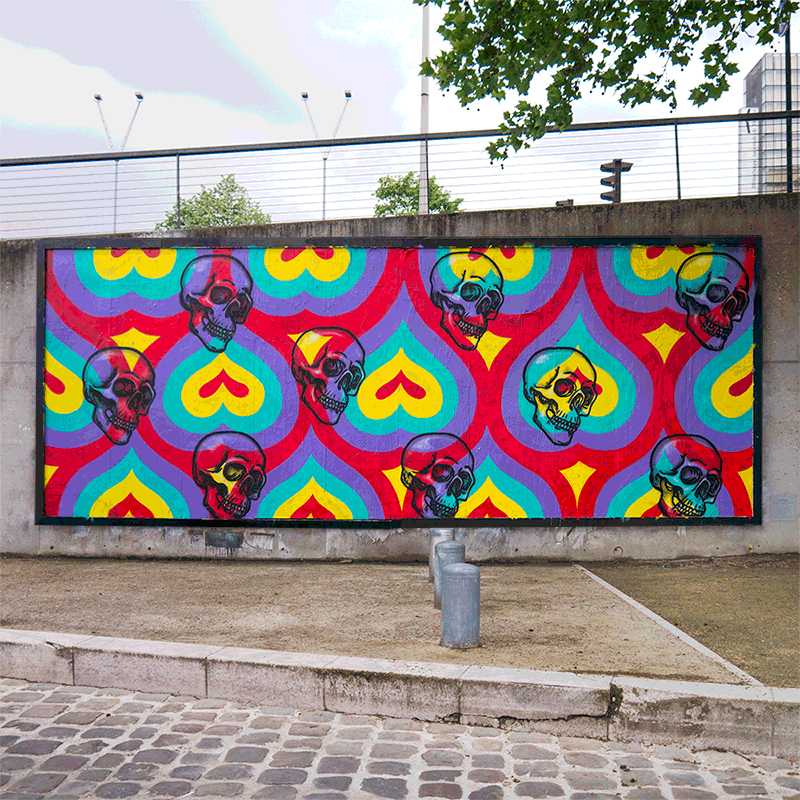
Matthias Gephart is a graphic designer and illustrator based in Berlin, Germany, who is revisiting his roots in graffiti in a project that incorporates his creative interests. “Stylewise, my personal background is the underground and alternative music scene, graffiti writing and Dadaist collage,” Gephart shares. Since 2010, he has been transforming neglected spaces with his graffiti that combines graphic design and collage visuals, taking the idea of mural painting to the expanse of an entire room. He calls this project “The Magic Moment.”

Photographs of Gephart’s work are deceiving, where our perceptions of dimensional space changes as the walls and floors seem to dissipate into the flat drawing. Only a window or a doorway breaks the visual spell. “Yes, these are real physical rooms, the “drawings” are executed with a spray can,” Gephart wrote in an email to Hi-Fructose. “As portraits of persons inside the rooms often help to illustrate the installation character of the pieces, they are part of the final documentation as well as they become part of the art itself.”

“Creating detail shots follows a similar intention: I think that details sometimes even reveal more about an artistic approach than the whole piece can, as long as the viewer is only able to judge a reproduction instead of being at the physical location… I want my painting to give birth to new life in abandoned spaces, under old railroad bridges and along forgotten trails and factories, let them use and transform the gloomy and beautiful aesthetics of decay,” he says.










 When
When  Having just come off their exhibition at
Having just come off their exhibition at 
 Based in Lisbon, Portugal,
Based in Lisbon, Portugal,